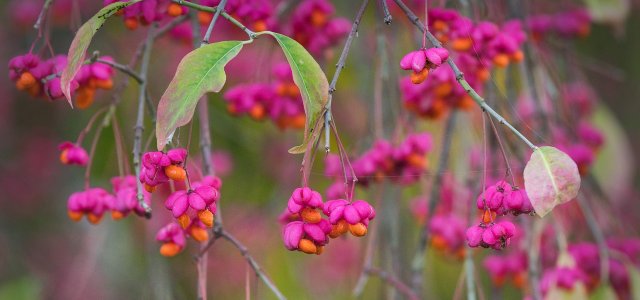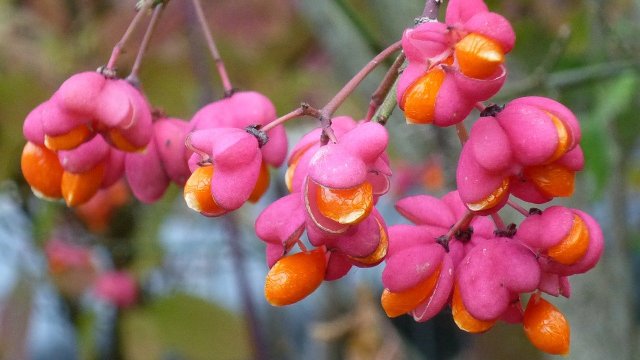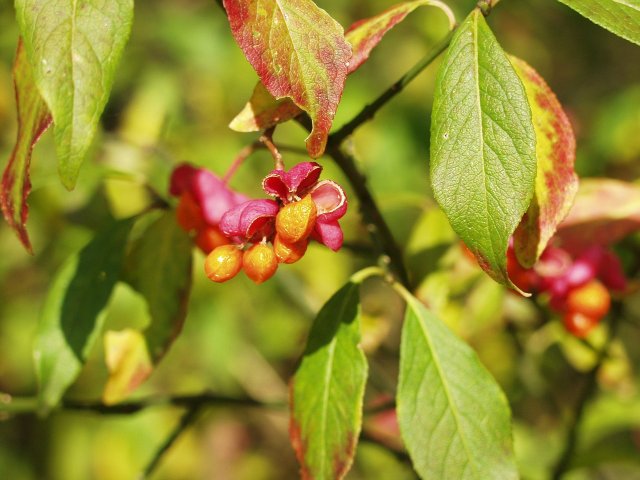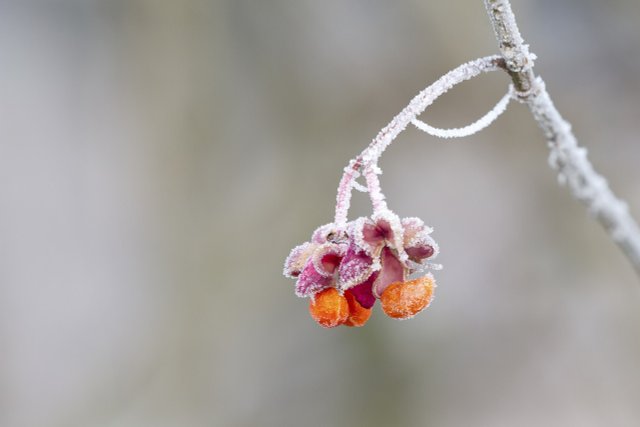
The spindle tree is one of the most common native shrubs. Visually, it delights with its bright fruits, and the shrub is also a popular food source for various animals.
The spindle tree belongs to the spindle shrub family and is native to Southern and Central Europe as well as Asia Minor. The native shrub grows up to six meters high and feels especially at home in floodplain forests, at forest edges and in field copses. The wood of the spindle bush is very hard. According to NABU, it used to be used to make organ pipes, knitting needles, weaving spindles and shoe nails, among other things.
From May to June, the spindle tree bears flowers. The colorful, bright fruits appear in the fall. They burst open in September and October, revealing the seeds.
Spindle tree: Popular with animals

The spindle tree is very popular with various animals. Both the fruits and the flowers are gladly visited by insects and other small creatures. Robins, thrushes, magpies and various species of titmice, for example, like the seeds of the spindle tree very much. The nectar-rich flowers are popular with flies, ants, bees and other pollinators.
Keep in mind, however, that the spindle tree is highly toxic to humans and, for example, large grazing animals. All parts of the plant contain toxic glycosides and various alkaloids. Anyone who eats the fruit risks circulatory problems, fever and colic, according to NABU. However, the consequences do not occur immediately, but only about 12 hours after consumption. Large quantities of the fruit can lead to fatal paralysis in bad cases.
The right location
You can also plant the spindle tree in your garden. If you want it to thrive, you must first find the right location for it. This is characterized by the following features:
- sunny,
- soil rich in lime and nutrients,
- fresh to moist, loamy soil.
Overall, the spindle tree is very adaptable and robust. The above characteristics are ideal, but the shrub also thrives in partial shade in rather sandy, drier soils. It is important that the soil is not too heavy and compacted, but well-drained.
How to plant the spindle tree

You can plant the spindle tree practically all year round – the main thing that the ground is not frozen. The main planting time is in spring or autumn.
- Special preparation of the soil is not necessary for the spindle tree. Only if the soil is very heavy, you should thoroughly loosen it and, if necessary, mix it with a little sand.
- Then dig a generous planting hole and place the plant and its root ball in it.
- Fill the hole again and press the soil well.
- Do not forget to water well!
- Important: spindle trees form dense fine roots with a diameter of one to five millimeters. These are sometimes close to the surface, so you should not necessarily underplant the shrubs with bulb flowers or perennials.
Caring for spindle tree: tips and information

spindle trees require almost no care. With the following tips, you’ll encourage lush blooms and lots of fruit:
- Water moderately. You can water the plant when the soil surface has dried out. From September onwards, you can gradually reduce the watering as the plant prepares for winter.
- The main growing season starts in April and ends in July. During this time, you can regularly water the spindle tree with fertilizer. In spring and autumn you can also spread some compost on the soil.
- spindle trees are very tolerant of pruning. You can prune them out in the spring without any problems. They also tolerate radical pruning.
- In winter you do not need to take any additional measures. The plant is frost hardy.









